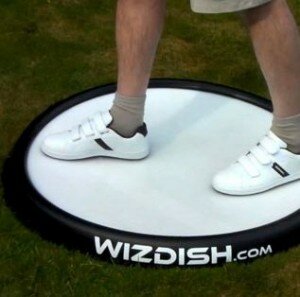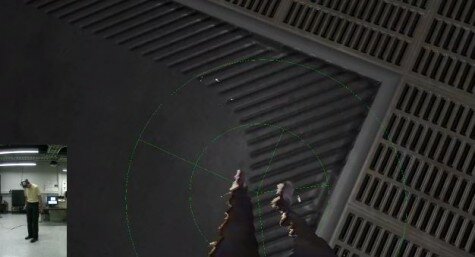Oliver Kreylos from the Department of Computer Science, University of California, suggests the Oculus Rift should get positional tracking as its first upgrade.
UPDATE: Since this article was posted, the Oculus team have said they plan to include some form of positional head tracking in the final consumer version that is planned to come out next year. Palmer Luckey has also Tweeted "This is only the beginning, future versions of the Rift are going to blow you away even more."
Out of the box, the dev version of the Oculus Rift will only include orientational tracking, not positional. Orientational tracking is where the view changes according to the direction the user is facing. So, if you were in a game looking forward facing a cityscape and suddenly ducked behind a boulder, your view would not be obscured by the boulder, you would still see the cityscape.
Oliver Krelos says that us humans subtly positionally move, even when looking left and right. Without this being implemented in virtual reality, the sense of immersion is reduced.
“We tend to move our heads quite a bit sub-consciously. If the world doesn’t react appropriately then it appears fake and it is not very nice.” says Krelos.
 Another challenge is the way we will move from point to point in virtual environments. Physical objects like the WizDish and Virtuix Omni offer one solution. Another is one that Oliver talks about which is a virtual bullseye.
Another challenge is the way we will move from point to point in virtual environments. Physical objects like the WizDish and Virtuix Omni offer one solution. Another is one that Oliver talks about which is a virtual bullseye.
“The second issue is how you get around in your virtual world. Mostly, if you port something from your desktop environment you would use some sort of input device like a joystick device.
The idea of moving around with a joystick is not particularly great because you are embedded into a VR environment when using a head mounted display so you want to be able to do navigation.
The one I use is a virtual bullseye on the floor. You are standing in the middle of it and as soon as you step outside of it you move forward. As the bullseye follows you step backward to stop.” (This is better shown in the video below).
Krelos concludes: “The importance of positional head tracking in addition to orientational head tracking, I believe should be one of the first after-market modifications. You need to think about proper locomotion and you need to think about proper embedding of the player’s body."
In the video Oliver Krelos is using an eMagin Z800 Visor, and the tracking system is an Intersense IS-900. The virtual world is a mash-up of a Doom3 level.
Oliver Kreylos launched a in November 2010 which has reached almost 2.5 million views. In it, he combines the colour and the depth image captured by a Microsoft Kinect and projects the colour image back out into space, creating a "holographic" representation of the persons or objects that were captured.
To read Oliver's 'The Reality of Head Mounted Displays' document click here. His website is here.
FREE WEEKLY 3D NEWS BULLETIN –























